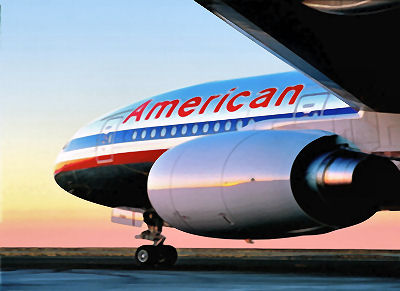Investing
The Bankruptcy Rumor Mill Heads Toward AMR (AMR, EK, BAC)
Published:
Last Updated:
 AMR Corporation (NYSE: AMR) is in trouble. That is at least what the rumor mill is trying to signal. What may seem like aggressive reporting over the weekend has added fuel to the fire of the rumor mill today. The problem is that AMR’s problems run very deep. The issue of American Eagle and the on-again-off-again sale, spin-off, IPO, and other chatter has not ever been able to help the company. Reports from the WSJ and MarketWatch, both under Dow Jones and News Corp. (NASDAQ: NWS.A), have issued reports using the dreaded “B” word… “Bankruptcy.”
AMR Corporation (NYSE: AMR) is in trouble. That is at least what the rumor mill is trying to signal. What may seem like aggressive reporting over the weekend has added fuel to the fire of the rumor mill today. The problem is that AMR’s problems run very deep. The issue of American Eagle and the on-again-off-again sale, spin-off, IPO, and other chatter has not ever been able to help the company. Reports from the WSJ and MarketWatch, both under Dow Jones and News Corp. (NASDAQ: NWS.A), have issued reports using the dreaded “B” word… “Bankruptcy.”
It would be easy to bring up that recent bankruptcy rumors regarding Eastman Kodak Co. (NYSE: EK) and Bank of America Corporation (NYSE: BAC) have been denied or refuted. Warren Buffett came to the aid of BofA and many argue that the company itself is not at risk for any form of bankruptcy even if that may be a possible strategy for what is left of Countrywide. Eastman Kodak denied reports of its bankruptcy rumors and shares today are up big, but our own poll from readers indicated that Eastman Kodak is at a higher and sooner risk of default than Greece.
MarketWatch noted, “…concerns that the troubled carrier was about to file for bankruptcy.” The WSJ noted last night, “If American Airlines was a seat, it would be a middle one in coach, sandwiched between two behemoths, pledged as collateral for a loan.” Neither report is nice, no matter how you cut it. Bloomberg has also addressed the issue with some comments from the company.
Another issue brought up was by Maxim Group, pointing out the exceptionally high number of AMR pilots retiring versus normal times as a way of protecting their pensions. That is very troubling. Are we to consider this a retiree’s version of insider trading?
There is a legitimate concern here when you consider the sector. AMR’s market cap now appears to be under the $1 billion mark. It is a very misleading market capitalization rate because AMR has over $10 billion in long-term debt. Its June 30 balance sheet (per Yahoo! Finance) lists its net tangible assets and its total stockholder equity at -$4.5 billion. A regulatory filing from September showed that AMR is expected to have more than $4 billion in cash after deducting the restricted cash as of the new quarter-end (now last week).
This is not the first time that some sort bankruptcy fears have arisen. The entire airline industry might have gone belly up in 2001 after the terror attacks had it not been for something close to a $15 billion government bailout grant. AMR was not immune. AMR was also in trouble at the peak of the 2008 energy bubble when it looked as though oil was never going to trade under $100 per barrel ever again. It also was being deemed as an “at-risk” entity in early 2009 during the market panic when shares briefly traded under $2.50 per share. In the peak of the selling in March 2003 AMR was at a dismal $1.25 at the lows.
During the recoveries, AMR shares more than doubled within a month of the lows and it only took hares more than doubled from the lows in a month in 2003 and it only took about 100 days before AMR was back at $10.00. During the 2009 post-panic snap back, it took a month for shares to double off the lows, but ever since then the stock only traded above $10.00 during one month (March-2010).
The losses are expected to continue at AMR after -$1.17 EPS in 2010. Thomson Reuters has estimates of -$3.45 EPS for 2011 and -$1.95 EPS for 2012. The revenue estimates are $23.97 billion for 2011 and $25.26 billion for 2012.
AMR shares are down over 15% at $2.50 and shares had been as low as $2.40 earlier this morning. That is worse than ugly if you consider the 52-week is $8.98.
If AMR were to file for bankruptcy reorganization, the company would continue on. The new shareholders would likely only be the current debtholders as it would seem that there is nothing left for the current equity holders.
S&P last gave an update action in May with a Negative outlook for the AMR parent and both the foreign and local long-term ratings are “B-” as of last look.
JON C. OGG
Thank you for reading! Have some feedback for us?
Contact the 24/7 Wall St. editorial team.